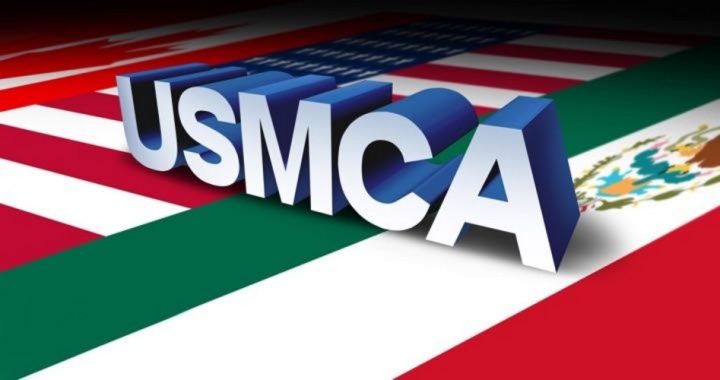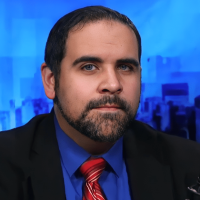
According to a study conducted by researchers from the University of Ottawa (often referred to as OttawaU), 57 percent of the text of the United States-Mexico-Canada Agreement (USMCA) is copied from the Trans-Pacific Partnership (TPP). Ironically, President Trump has repeatedly described the TPP as a “horrible deal.”
The study, entitled “How much of the Transpacific Partnership is in the United States-Mexico-Canada Agreement?” was published on June 26, 2019. It has since received little attention from the media, mentioned only as a blurb in Politico’s “Morning Trade,” earlier this month. A copy of the study in its entirety was found tucked away on the American Chamber of Commerce Vietnam (AmCham) website.
Comparing the USMCA to existing free trade agreements, researchers found: “The USMCA closely tracks the structure and text of the TPP. 29 out of 30 TPP chapters have equivalents in the USMCA and 72 percent of the articles in the matched USMCA chapters are found in both agreements.” In other words, not only are many of the chapter titles identical, but so are the various articles and clauses contained in them. “Furthermore, when looked at in the context of all U.S. trade agreements, the USMCA and TPP, based on their textual similarity, appear as belonging to the same generation of treaties. In other words, the USMCA, contrary to Trump’s rhetoric, does not mark a fundamental rupture in U.S. practice and has more in common with the TPP than not,” the study stated.
Conducting a high-level textual analysis of the text of the USMCA compared to previous trade agreements, the researchers found that the USMCA “continues rather than breaks with existing practice.” This runs in stark contrast to claims by both Secretary of Commerce Wilbur Ross and U.S. Trade Representative Robert Lighthizer that the USMCA represents a “new paradigm shift” in the way the United States will conduct future trade agreements.
The study further highlighted that there are “features in the USMCA that align more comfortably with pre-Trump U.S. policies and ultimately the ‘Establishment Narrative,’” a term coined by Nicolas Lamp, a former dispute settlement lawyer at the Appellate Body Secretariat of the World Trade Organization (WTO). According to the study, “Lamp identifies an ‘Establishment Narrative,’ which dominates trade textbooks and — until recently — most trade policymaking.” This “Establishment Narrative,” as both Lamp and the OttawaU study call it, is essentially the globalists’ trade agenda for forging integrated regional blocs and ultimately a one world government via economic liberalization and “free trade agreements.” Not only is this the very policy taught in schools and universities, it has also uninterruptedly dominated U.S. trade and foreign policy since 1934, continuing through the Obama administration’s push for the TPP and T-TIP multilateral integration schemes. Despite all of Trump’s anti-globalism, pro-“Americanism” rhetoric, his premier trade agreement — the USMCA — for the most part, does not deviate from the “Establishment Narrative” that has come to define U.S. and globalist trade policy.
Using a computerized model to automatically compare the text of the USMCA with a recently created database of 449 trade agreements notified to the WTO, known as the ToTA Corpus (which stands for Text of Trade Agreements), the top 10 trade agreements most resembling the USMCA were all U.S. free trade agreements; see the table below from the study:
 In other words, the USMCA could have easily come out of the administrations of Barack Obama, George W. Bush, or Bill Clinton, with only negligible differences. In fact, others, including former Obama-era high-ranking officials, have noted the striking similarity between the TPP and the USMCA.
In other words, the USMCA could have easily come out of the administrations of Barack Obama, George W. Bush, or Bill Clinton, with only negligible differences. In fact, others, including former Obama-era high-ranking officials, have noted the striking similarity between the TPP and the USMCA.
On September 30, 2018, the same day that the initial draft of the USMCA was released, former Obama-era U.S. Ambassador to Canada Bruce Heyman appeared on CNBC’s Squawk Box, praising the USMCA. Heyman said, “It’s obviously welcome news. This is welcome news for North America; it’s welcome news for the markets obviously this morning.”
A Democrat, former Goldman Sachs vice president, and board member for the pro-one-world-government Chicago Council on Global Affairs, Heyman was appointed U.S. ambassador to Canada by President Obama in 2013. Upon his Senate confirmation in 2014, Heyman served in that capacity for the duration of Obama’s term. The night the text of the USMCA was released on the USTR website, Heyman reviewed various portions and chapters of the agreement, only to discover that they were identical to those in the TPP. Ironically, Trump has repeatedly lambasted the TPP as the “worst trade deal” ever negotiated. “[From] some of the reads I got over night, two-thirds of this agreement is essentially going back to TPP,” Heyman explained. “All they did was take so much of the language of TPP and implement it here, as it pertains to Canada.”
Speaking on the same program, Fordham Law Professor Matthew Gold elaborated how Trump’s “big win” in regard to the USMCA/NAFTA renegotiations with Canada comes directly from the TPP. “He got a large number of small updates most of which were in the TPP agreement, which he pulled out of. He got us back to a small increased access in the Canadian dairy market, almost all of which was in the TPP,” Gold said.
Another key example of identical text copied from the TPP in the USMCA is the USMCA’s Chapter 30 on “Administrative and Institutional Provisions.” With the exception of a few minor tweaks, USMCA’s Chapter 30 reads almost word-for-word with the TPP’s Chapter 27, also entitled “Administrative and Institutional Provisions.” Both chapters establish the administrative or executive governing body for each of the agreements once they go into effect. Chapter 27 of the TPP establishes the governing “TPP Commission,” likewise Chapter 30 of the USMCA establishes its governing “Free Trade Commission.” Both commissions are empowered with identical supranational powers. In fact, a quick read of Chapter 30 alone should be enough to convince anyone that the USMCA is anything but a “better deal” or a “win for America.”
In addition to Ambassador Heyman, Richard N. Haass, president of the globalist, pro-one world government Council on Foreign Relations (CFR), also praised the USMCA for its similarity to the TPP. “USMCA is NAFTA plus TPP plus a few tweaks,” Haass said on Twitter, within days of the release of the initial text of the USMCA.
If Trump believed that the TPP was as bad as he said it was — so much so that one of his first official acts as president was signing an executive order to end U.S. participation in the multilateral scheme — then it should be clear even to the president, if he’s honest and willing to compare it for himself, that the USMCA would likewise be a disaster, and should therefore take immediate action to terminate it as well. Also, Trump should consider following through on a previous ultimatum to withdraw from NAFTA and thus not be entangled in a permanent economic integration scheme with Canada and Mexico.
Those concerned about the USMCA should not optimistically wait on the president alone to recognize the impending disaster. Pressure should be placed on Congress and Trump to reject both ratification and implementation of the agreement.
Image: wildpixel / iStock / Getty Images Plus




